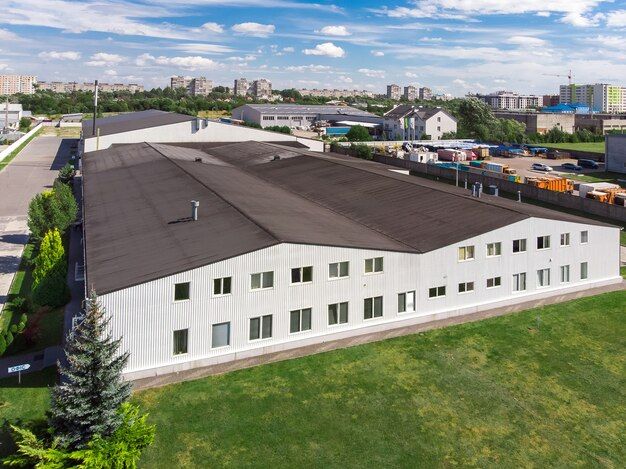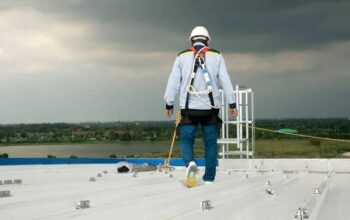
Commercial roofs can last a range of 10 to 40 years but the longevity of your roof depends on a variety of factors these include its care and maintenance, location and the use it receives.
The most effective way to tackle a problem is to wrap both arms around it this gives you the power and leverage to bring it down. commercial roofing fort wayne comes with its share of challenges explore the top 5 headaches that businesses face in maintaining their roofs.
1. Water Damage
Leaving water damage unchecked can cost a commercial property a lot of money. This is because a damaged roof could allow water to seep into the property, corroding pipes and compromising drywall.
Water leaks can also affect the interior of the building, ruining furniture, machines, wall decor and personal belongings. They can even create a health risk for employees and guests.
Ponding water can encourage plant growth on the roof, fostering algae, moss, mold and mildew these stains are difficult, costly and time-consuming to remove. In addition, they may stain the building’s exterior. This can lead to a loss of curb appeal and reduce the value of the property.
2. Leaks
Leaks in commercial roofs are one of the biggest headaches that can be caused by poor maintenance. If left unchecked, they can cause damage to inventory, equipment and structural issues. They also pose a health risk as they encourage mould and fungus growth.
Roofing contractors must ensure that the drainage system is well-designed to prevent leaks and standing water on the commercial roof. This includes proper sealing of drains, scuppers and gutters. If not done properly, these areas may become clogged and lead to standing water which creates unnecessary weight on the building structure.
Similarly, flashing can get damaged and allow for water to enter the roof membrane causing interior damage. This can happen due to foot traffic, natural occurrences like hail or wind and even weathering over time.
3. Debris
Over time, flat roofs collect debris like leaves and pine needles, trash, and even dirt and dust. It’s important to keep an eye on these materials and remove them regularly. Heavy debris can scrape or damage the roofing material and even clog drains and create barriers that pond water.
Debris can also harm equipment, pipes, or vents mounted on the roof. It’s a good idea to have a professional examine these items and ensure they are secure before the weather turns bad.
All building owners should also make sure gutters and downspouts are clear of clogs. This will help prevent leaks, mildew, mold and more. A professional roofer can examine the drains, gutters and downspouts during a routine cleaning and inspection. This is especially important for commercial buildings that house HVAC systems or solar panels on their rooftops.
4. Clogged Gutters
Gutters are designed to channel water away from the foundation of your house, but when they’re clogged with debris, twigs and leaves, it can cause the soil around your home to become saturated. Over time, this can damage the foundation and lead to basement flooding and rot.
Clogged gutters can also contribute to ice dams during the winter. This is because the water in your gutters won’t drain properly and will be trapped, freezing in the low points of the roof and the edges of your gutters.
Debris-filled gutters also create an inviting environment for pests like birds, mice, rodents and insects. These pests love warm, damp environments and can cause serious damage to your property and health issues. They can also eat through the gutter material and soffit, leaving holes and gaps.
5. Weather
Depending on the area, harsh weather conditions accelerate wear and tear on commercial roofing. For example, hail can damage the surface and puncture shingles. Wind can scatter debris or blow it off the roof entirely. Heavily rainy weather leaves moisture behind on roofing materials that cause rot and leaks.
Similarly, frequent rainfall can clog gutters and lead to roof ponding that leaves material exposed to water for an extended period of time. Keeping up with routine maintenance can help reduce these problems by regularly clearing debris and ensuring that slope, drainage and gutter systems are working well.
Summer heat also damages commercial roofing. Hot temperatures soften materials, making them more vulnerable to environmental degradation and making them more likely to require costly repairs or replacement much sooner than they would otherwise.


